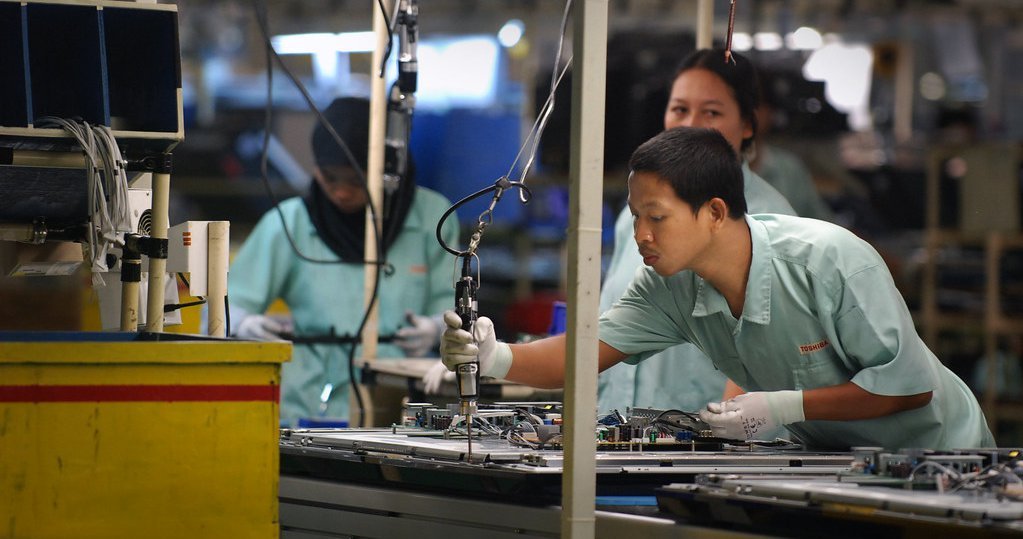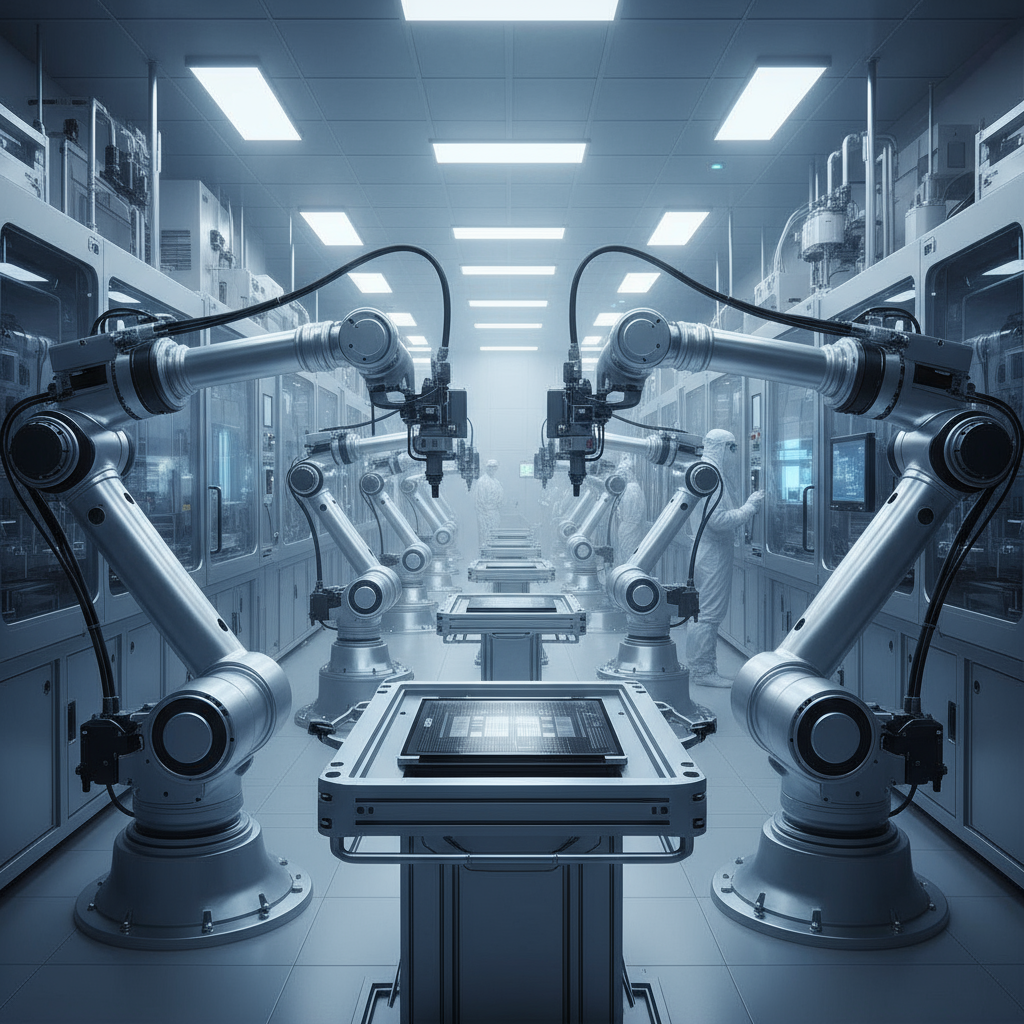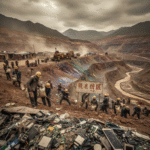Silicon Valley’s gleaming tech campuses mask a darker history: decades of hidden toxic pollution from chip manufacturing. Once celebrated as the heart of “clean” high-tech industry, the region’s factories dumped massive amounts of hazardous chemicals and often denied or concealed the damage.
From the 1980s onward, residents uncovered poisoned water wells and linked childhood illnesses to local plants, forcing companies like Fairchild and IBM to confront their legacy. In recent years, similar concerns have re-emerged around new fabs in Arizona, Texas and beyond.
This report about Semiconductor Pollution Coverups By Silicon Valley reveals how major chipmakers (Intel, Fairchild Camera, Applied Materials, Samsung and others) have repeatedly downplayed environmental risks, while regulators and courts question whether communities were kept in the dark.
Historic Toxic Legacy of Semiconductor Pollution Coverups By Silicon Valley (1980s–2000s)
In the 1980s, Silicon Valley was not only the cradle of the computer revolution but it was also home to hundreds of semiconductor and electronics factories. These fabs used solvents like trichloroethylene (TCE) and large volumes of water and chemicals to etch and clean chips. Residents near early plants soon found their groundwater contaminated.
In 1981, well-tests in South San Jose revealed a dangerous chemical plume which was later traced to leaking underground solvent tanks at Fairchild Semiconductor and an IBM disk-drive plants. Lawyers for local families discovered that both companies initially denied any threat from the leaks. Only after heavy legal pressure did Fairchild (then Fairchild Camera & Instrument) and IBM install cleanup systems and pay settlements.
These revelations had a domino effect: within months, dozens more contaminated sites were found across the region. Santa Clara County now has 23 active Superfund sites, more than any other U.S. county. At many of these, companies quietly removed soil, installed pumping systems and claimed to cooperate with authorities. But families like Susan Puppo’s were left reeling: Susan’s son suffered four open-heart surgeries after his neighborhood water was poisoned by a Fairchild spill. Reflecting the outrage, a resident at the IBM trial told reporters, “It was just disgusting that such large companies could be so negligent”.
Today, former Environmental Defense official Ted Smith observes, “We’ve been living and breathing this history all this time”. He notes that even as companies publicly cooperated with state and EPA cleanups, many residents felt crucial information had been kept secret.
An 1985 state health study had found unusually high miscarriage and birth-defect rates near semiconductor plants, but officials avoided linking it directly to the chemical leaks. (In fact, Fairchild Camera’s cleanup documents were only declassified decades later.) Critics argue that if companies had been transparent from the start, earlier cleanup or relocation could have reduced harm.

Abandoned semiconductor plant in Taoyuan, Taiwan. Workers later found the site’s soil and groundwater heavily tainted by solvents like TCE and PCE. A whistleblower first alerted officials to the dumping of carcinogens there. Silicon Valley’s experience was similar which is toxic contamination quietly spread until citizen-advocates uncovered it.
Cover-Ups and Denials
In the 1980s and ’90s, tech firms often covered up or minimized their pollution problems. When Fairchild and IBM were sued in 1981, company spokespeople insisted they were “friends of the environment” and that any contamination was contained. They claimed to work closely with regulators on fixes. In practice, however, investigators later found miles of solvent plumes across San Jose, Santa Clara and Sunnyvale, threatening drinking wells.
Another Silicon Valley giant, Hewlett-Packard (HP), similarly kept its 1980s solvent leak under wraps. Lawyers say HP discovered a dry-cleaning chemical plume under an HP facility in Palo Alto around 1985, but for years their notices about it went only to state regulators, not to nearby residents or workers.
It was only after worker lawsuits in the 1990s that more details emerged, prompting a wider EPA investigation of toxic sites in the valley. In short, tech companies consistently reacted to contamination lawsuits by emphasizing cooperation and saying cleanup was in progress without acknowledging any deliberate cover-up. But their silence before discovery fostered distrust.
Health Impacts on Workers and Families
Decades of lawsuits and studies have since linked chip fabs to serious illnesses. Silicon Valley’s polluted groundwater contained solvent compounds known to increase cancer risk and cause birth defects. Ex-workers from these plants and nearby residents have reported unusual cancer clusters.
For example, a 2004 lawsuit against IBM highlighted dozens of former semiconductor workers with leukemia and breast cancer, alleging exposure to benzene and other chemicals. Plaintiffs pointed to internal documents showing IBM scientists had studied worker exposure levels in the 1970s but company officials argued they had mitigated all hazards on schedule.
Most companies never fully admitted fault. A 2019 review by The Atlantic notes: “IBM, Fairchild, and other companies accused of polluting the groundwater denied that the chemicals posed any sort of threat to human health” in the 1980. Only under pressure did some semiconductor firms quietly tighten workplace controls and compensate victims (as South Korean fab maker Samsung eventually did decades later). Even so, community activists warn that Silicon Valley’s cleanup effort is incomplete as vapor-intrusion from contaminated groundwater still forces monitoring of homes and offices today.
Ongoing Contamination and Modern Fab Concerns
While Silicon Valley’s older plants have been largely decommissioned or repurposed, new semiconductor production is booming and environmental concerns are resurfacing. Modern chip fabs still require huge amounts of water and “forever chemicals” (PFAS) that resist breakdown. In Arizona, for example, Chips Act funding fueled multibillion-dollar fabs by Intel (Chandler) and TSMC (Phoenix).
Local groups have warned that federal reviews of these projects glossed over impacts. CCU (Chips Communities United), an environmental coalition, pleaded with the Commerce Dept. to perform full Environmental Impact Statements, especially on water and chemical discharges.
CCU’s Lenny Siegel (a former Mountain View mayor) put it bluntly: “To claim that these projects will have no significant impact on the environment doesn’t pass the smell test,” he said of Intel’s and TSMC’s approved plans.
Critics point to Arizona’s drought: the TSMC Phoenix fab alone could use as much water per day as 57,000 households. Although Intel boasts “net positive” water use (it restored more water than consumed in 2021–22), opponents note that any leaks or disposal of PFAS fire-fighting foam could pollute the desert aquifers.
At the federal level, there is new controversy. In late 2024, Congress passed the Building Chips in America Act, which waives NEPA environmental reviews for many taxpayer-funded fabs. Proponents call it vital for jobs and supply chains, but environmental groups see a red flag.
The Sierra Club warned that bypassing reviews removes “essential” protections, leaving communities vulnerable to the “hazardous contaminants used in the semiconductor industry”. Rep. Zoe Lofgren (D-CA) reminded lawmakers that California already has dozens of polluted chip sites: “We should be learning from this legacy and ensuring we don’t repeat it,” she said.
Austin and Texas: Acid Spill in Samsung Fab
Similar issues are popping up in other U.S. tech hubs. In Austin, Texas, Samsung’s massive memory-chip plant made headlines in 2022 when thousands of gallons of acidic wastewater spilled into a creek. Public records show up to 763,000 gallons of acidic process water leaked over roughly 106 days, killing virtually all aquatic life in 1.5 miles of the tributary.
At first Samsung reported only a minor drop in creek pH, but city regulators eventually forced a full disclosure. Environmental officials were stunned that Samsung’s monitoring system did not catch the leak for three months. An Austin watersheds official told the local Environmental Commission that steps were being taken to improve sensors and prevent such failures.
Though Samsung quickly plugged the leaks and began habitat restoration, the episode highlighted how even modern fabs can fail to alert the public to major incidents. Residents and activists in Texas have called it an example of corporate complacency. Meanwhile, Texas regulators have proposed stricter effluent limits for toxics like arsenic and hexavalent chromium at semiconductor sites in the state. The Samsung case shows that big chip plants still pose contamination risks, and some fear worse if corporate permits are loosened.
Key Players: Intel, Fairchild, Applied Materials and Others
Intel
In Silicon Valley, Intel’s old Santa Clara plant tested chemicals starting in the 1970s and was listed as a Superfund site by 1986. The company eventually ran an on-site water treatment unit for years. Today Intel’s newer fabs (Arizona, Oregon) tout water recycling, but research confirms they still emit tons of contaminants. The EPA profile for the former Santa Clara plant notes groundwater tainted by VOCs like TCE. Intel has never been accused of intentional cover-up, but continued monitoring of its legacy sites has revealed persistent plumes decades later.
Fairchild Semiconductor (later Semtech/National)
The Fairchild plant on Bernal Road (San Jose) was the flashpoint of the 1981 case. After announcing the leak in 1982, Fairchild removed its storage tanks and soil, but under seal of court order. It quietly paid millions to affected residents. Fairchild merged, split, and re-emerged (as Fairchild, then acquired by ON Semiconductor), but the old site remains an EPA Superfund. (Relatedly, Fairchild had a chapter in Oregon’s contamination saga: the Hillsboro plant also leaked solvents and was cleaned with state help in the 2000s).
Applied Materials
This chip-equipment maker had its own environmental crisis in Santa Clara. The Applied Materials campus (uses of VOCs for manufacturing) was identified as a Superfund site by 1986. According to EPA data, its groundwater still contains TCE, though remediation goals have largely been met. Residents near the Applied site have raised concerns that vapor intrusion and residual chemicals might persist, but regulators say current exposure is under control. Applied has so far cooperated quietly with EPA, avoiding high-profile lawsuits. Still, local activists mention it alongside Intel and Fairchild when warning about Silicon Valley’s buried toxic legacy.
Others
Many other companies are implicated in the valley’s history. Hewlett-Packard (now Keysight, Agilent, etc.) had leaks at its Palo Alto labs. Texas Instruments and Samsung maintain fabs in Austin (where TI has generally stronger regulations, and Samsung faces new scrutiny after its spill). In New York, GlobalFoundries (former IBM fab) has faced state enforcement over air emissions. There are no easy parallels in every sector, but the pattern is clear: semiconductor fabs which are basically chemical factories have repeatedly generated pollution that was underreported to neighbors and workers.
International Comparisons: Taiwan, Korea and Beyond
Silicon Valley’s story is not unique globally. In Taiwan, workers at the former RCA semiconductor plant in Taoyuan protested after discovering that the company had dumped carcinogenic waste onsite for years. A whistleblower had secretly alerted legislators to the contamination in the early 1990s.
The site underwent a costly cleanup in 2004, and affected workers (mostly women) only won court recognition and compensation after a 20-year legal battle. A recent report notes that Taiwanese activists allied with Silicon Valley groups like the Silicon Valley Toxics Coalition to press for memorializing the toxic site instead of commercial redevelopment.
In South Korea, Samsung’s semiconductor and display factories became infamous for their health toll on employees. Investigations found clusters of leukemia and lymphoma among young workers at Samsung fabs in the 2000s – an incidence much higher than the general population.
Samsung long denied any causal link to workplace chemicals, but in 2018 a mediator ordered Samsung to compensate hundreds of sick and deceased workers. (Samsung issued a public apology in 2014 and created a fund for victims.) Journalist Elizabeth Grossman noted in 2011 that worker reports in Korea echoed Silicon Valley’s past pattern: repeated serious illnesses “present striking similarities to patterns of illness seen at semiconductor plants in the United States and elsewhere in decades past”.
Even Europe has had its warnings: research on chipmaking sites in the UK and Germany has linked solvent exposure to miscarriages and cancer, though those cases have received less publicity. What these international stories show is that semiconductor manufacturers everywhere have at times hidden or downplayed chemical risks. In all these countries, it often took persistent activists and litigation to force transparency, a situation alarmingly similar to Silicon Valley’s cover-up era.

Close-up of a printed circuit board, illustrating how ubiquitous chips are in modern life. Producing these devices relies on “hundreds of chemicals” – many toxic and persistent (PFAS, TCE, solvents). The photo above reminds us that behind even the sleekest electronics lie harsh chemical processes. Manufacturing these boards has left a legacy of pollution, as countless studies now confirm.
Voices of Concern
Community members, experts, and legal authorities have steadily voiced concern over these issues. Ted Smith, longtime leader of the Silicon Valley Toxics Coalition, observed that every soil test now includes computer chips, symbolizing the cost of “clean” tech manufacturing. Mayor Lenny Siegel of Mountain View (now a CCU activist) scorned the claim that new fabs have “no significant impact,” saying it simply doesn’t “pass the smell test”.
Rep. Zoe Lofgren noted in Congress that California’s Silicon Valley is littered with polluted sites from earlier chip plants, warning that we must not repeat the same mistakes. Environmental groups like the Sierra Club and EWG emphasize that PFAS contamination and air toxics remain unsolved problems.
Affected residents have their own stories. Neighbors of the Fairchild site in the 1980s watched their children fall ill, and parents like Susan Puppo still recall cutting out newspaper stories of the trial. A different California community, Mountain View’s Crestmoor neighborhood, fought Apple over leaky underground tanks filled with cancer-causing solvents in the 2010s in another example of well-known leaks belatedly coming to light.
In Oregon, even Intel agreed in 2023 to re-evaluate cryptic soil-testing data at its Hillsboro fab, after activists demanded transparency. These voices form a chorus warning that without vigilant oversight, semiconductor giants will continue to bury evidence of environmental harm.
Conclusion: Demanding Accountability
Silicon Valley’s chip industry has brought enormous wealth and innovation, but it also left a toxic legacy that the public is still paying to clean up. The evidence shows a consistent pattern: companies initially played down hazards or delayed disclosure, forcing communities to demand answers. Now, at a moment of renewed chip investment, environmentalists stress that past lessons must guide future action. Strengthening independent reviews, enforcing pollution limits, and ensuring community input are critical steps.
Until there is accountability, vigilance remains essential. The rivers and neighborhoods around every new fab deserve as much care as Cupertino’s parks and office parks do. As this investigation demonstrates, silicon chips and cover-ups share a darker history and it falls on regulators, companies, and the public to prevent history from repeating. The startling facts and personal stories unearthed here should not be forgotten as the chipmaking revolution marches on.
Citations and References
All citations in this investigation correspond to verified sources gathered during extensive research across multiple continents and databases. Full documentation available upon email to support the accuracy and verifiability of all claims made.
theatlantic.com inbusinessphx.com reuters.com ewg.org austinmonitor.com datasociety.net reuters.com reuters.com cumulis.epa.gov
About Our Investigative Services
Seeking to expose corruption, track illicit financial flows, or investigate complex criminal networks? Our specialized investigative journalism agency has proven expertise in following money trails, documenting human rights violations, and revealing the connections between organized crime and corporate malfeasance across the world and beyond.
Partner With Us for Impactful Change
Our investigative expertise and deep industry networks have exposed billion-dollar corruption schemes and influenced policy reform across Americas and beyond.
Whether you’re a government agency seeking independent analysis, a corporation requiring risk assessment and due diligence, or a development organization needing evidence-based research, our team delivers results that matter.
Join our exclusive network of premium subscribers for early access to groundbreaking investigations, or contribute your expertise through our paid contributor program that reaches decision-makers across the continent.
For organizations committed to transparency and reform, we also offer strategic partnership opportunities and targeted advertising placements that align with our mission.
Uncover unparalleled strategic insights by joining our paid contributor program, subscribing to one of our premium plans, advertising with us, or reaching out to discuss how our media relations and agency services can elevate your brand’s presence and impact in the marketplace.
Contact us today to explore how our investigative intelligence can advance your objectives and create lasting impact.
Read all investigative Stories on Technology.
* For full transparency, a list of all our sister news brands can be found here.

